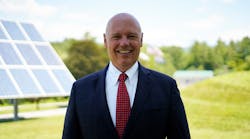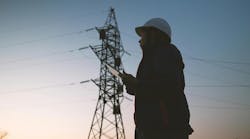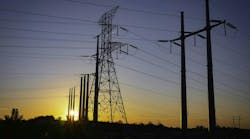Ever since there have been wooden poles to hold electric and telephone wires, these two major parts of modern society have been intertwined. Even today, we think nothing of calling our poles “telephone” poles although they support many different companies. There is a convergence of electric utilities and telecommunications technology, which is being driven by several desires. Many utilities are playing a role in the synergies and needs of the modern utility grid and recognizing the opportunity to expand broadband access to previously underserved areas.
All electric transmission companies have significant telecommunications infrastructure between their control centers and substations for Supervisory Control and Data Acquisition (SCADA) applications, video cameras, asset monitoring systems and high-speed protection packages. Add distribution stations with similar needs and additional smart meter, distribution automation needs, monitoring customer demands and distributed generation level the telecommunication data transport is increasing.
Some utilities own their highly reliable private systems, and some rely on contracts with telecommunication providers. The cyber security aspect and the reliance on these critical systems put them high on the risk registers of the industry. Many companies are investing in expanding their private fiber systems on their transmission lines and in the distribution space on their poles. This improves the reliability by being under the control of the utility and can lower their operating costs.
In the case of my transmission company in Vermont, we own more than double the number of miles of fiber optic cables than our miles of transmission lines. We have a highly reliable redundant high-speed broad band network throughout the state to operate the grid. We continue to expand our fiber footprint and are exploring new partnerships which can provide benefits to underserved areas.
Fast forward to our pandemic world today. “Broadband to all” is a message which is very popular. Children who may be learning from home are significantly disadvantaged if they do not have reliable internet. Tele-health has blossomed over the last year, but internet access is critical to its success. I know some of you reading this are thinking “Are there really places in the US without cable and broadband?” The answer is “yes,” in rural America. There are government efforts to bring these critical services to all Americans and the electric utilities may have a role in assisting. Up this think point in time, the economics of serving these customers has not been profitable. But similar to the Rural Electrification Act in the early 1900’s, the value to society may overrule economics. Over 12 states have passed legislation promoting electric utility provision of broadband services in some fashion.
Since many of the utility substations and transmission lines are located in less populated areas, there are opportunities for utilities to lease some of their fiber infrastructure with other carriers or local community telecommunication companies and districts interested in serving at the retail level. Some utilities may choose to play in the “last mile” business, as they already own the poles to every house. Others may just wish to be the “middle mile” provider to take local traffic to the internet hub. The incremental cost of adding fibers when installing high speed communications is very low and it gives utilities options to lease extra fibers or trade fibers with other fiber companies to gain coverage.
As electric utilities, we are in every city and town and service all the customers in rural areas already. We have growing needs to monitor distributed energy resources (FERC Order 2222), demand management programs, smart meters and distribution automation and high-speed protection systems. There is obviously a common need to have utility telecommunication’s growing needs to be combined with societal needs to bring high speed broadband to the rest of the country, which is still waiting for it.
Utilities are highly regulated and need to work with regulators on how to structure assets and rate plans which may be slightly atypical for utilities in order to speed this deployment. Most government and political leaders support the idea of further growth of broadband, and electric utilities should be willing to assist in this effort if the traditional providers either are not willing or cannot meet these societal needs. I believe that there is a combination of traditional and telecom companies which can be deployed to meet these challenges if we work across traditional work streams to focus on these critical services. It is expected that the government will continue to provide funding opportunities so that utilities with partners can develop mutually beneficial business arrangements to solve this problem.
Due to the pandemic, the need for reliable high-speed internet access for all Americans has become a glaring reality. Utilities can step up to meet the challenge of creating a path to bring the internet to areas that have been abandoned.


